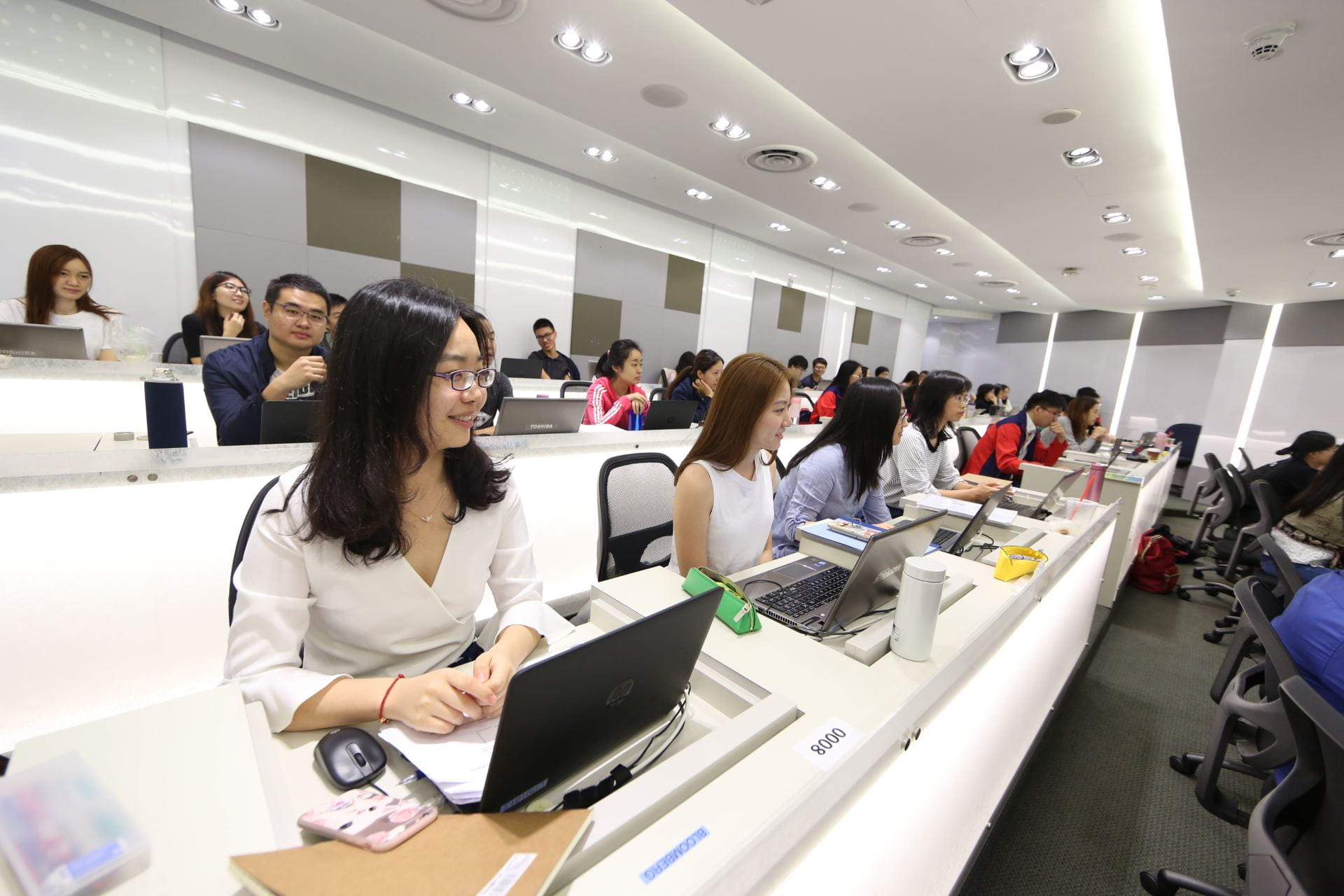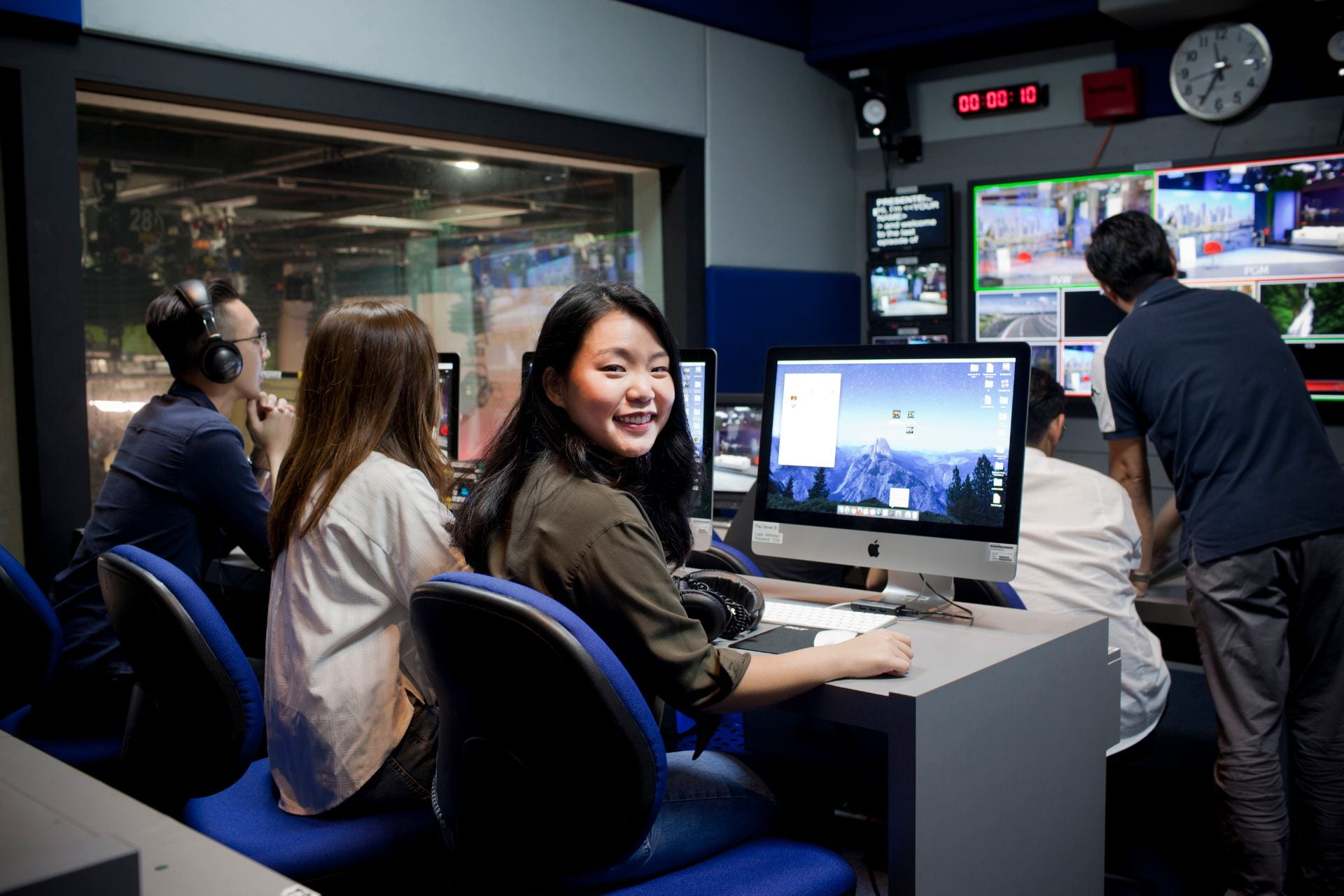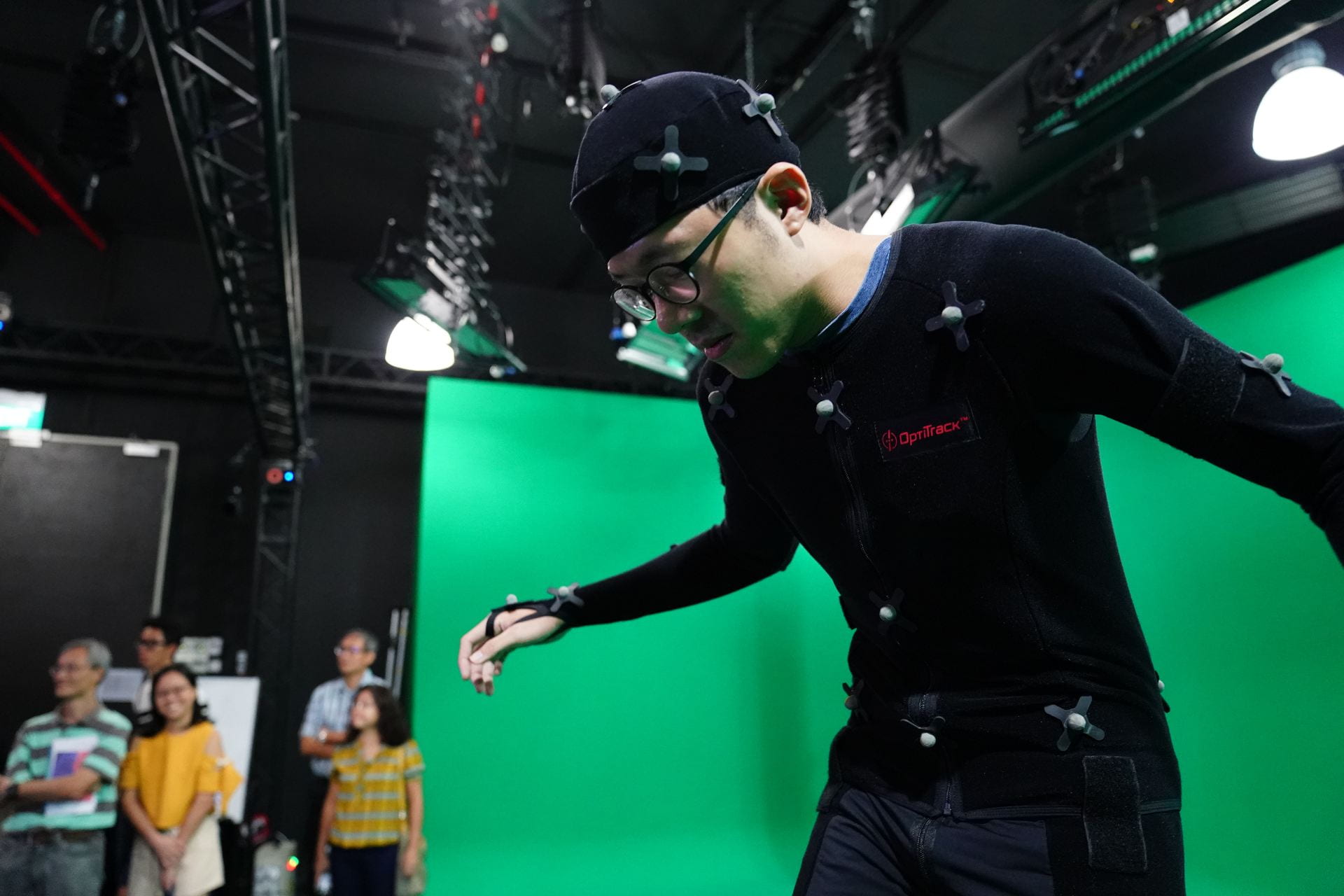Simulation learning is part of the experiential pedagogy at NTU where students are put through the paces in realistic scenarios. Derek Rodriguez drops in to explore how this helps prepare students for their future careers
IN CONTROL COME RAIN, SNOW OR SHINE
The circular tower that rises into view when you take a taxi to Changi Airport is a familiar sight to us. But what really goes on inside this iconic landmark?
NTU undergraduates thinking of joining the aviation industry can find answers at the tower simulator at the NTU Air Traffic Management Research Institute.
Two stories high and 13 metres in diameter, the reality lab replicates the working environments of an airport control tower, which includes a 360-degree view of the outside.
Built with the German Aerospace Centre DLR and housed at the School of Mechanical & Aerospace Engineering, the facility is one of the largest and most advanced in the world. Highresolution screens mimic real-life traffic situations at an airport, down to moving aircraft and various weather conditions.
The radar simulation laboratory beside it also looks at solutions to improve aviation safety and reduce traffic congestion.
“Simulated environments like this can have a great impact on learning,” says Kuok Zhi Qiang from the institute, a former air traffic controller for Changi Airport who now helps to train NTU students. “They make trainees feel like they are working in the real tower, minus the adrenaline of working with real aircraft,” he adds.
About 200 undergraduate and 30 postgraduate students are schooled in air traffic management-related academic projects each year.
NTU alumnus Tan Zheng Hao, who is training to be a pilot with Singapore Airlines, thinks his experience at the lab will help in his future career. Says the 2017 mechanical engineering graduate: “The panoramic view has that ‘wow factor’ with its realism, and what I’ve learnt there has introduced me to aviation and the flow and process of air traffic control communications. Now I might be on the other side of the microphone as a cadet pilot, but I’m still having the same conversations.”
BUY, SELL OR HOLD

Aiming to cut it in the banking and finance sector? Here’s your hot seat, especially if you’re a trader in training. The Nanyang Business School houses the 165-square-metre Centre for Applied Financial Education, the largest finance laboratory in the country.
The lab’s capabilities support the “platform-based learning track”. Under this track, students learn to interpret financial data, using financial platforms to evaluate the market and generate insights to make business decisions on stocks, bonds, currencies and other financial instruments.
“The students produce financial applications that are pitched to the financial industry, including companies like GIC, the Monetary Authority of Singapore and KPMG. These industry experts then grade the applications based on how commercialisable they are and how much potential they have. So far, one has been bought by a hedge fund and several others have been taken up by companies for further development,” says Assoc Prof Lee Boon Keng, the centre’s director.
DOCTOR, IS IT GOING TO HURT?

If you want to be a doctor, you need to be patient. This is doubly true at the Lee Kong Chian School of Medicine, NTU’s joint medical school with Imperial College London.
Even before NTU’s aspiring doctors begin their classes proper, they don hospital gowns, sit in wheelchairs and undergo medical procedures – in short, they become patients to learn what it’s like being the one seeking treatment.
Practical lessons in the state-of-the-art Clinical Sciences Building in NTU’s Novena campus come to life too. Here, the configurable simulated ward and consultation rooms could easily be mistaken for actual hospital facilities.
Trained actors fitted with prosthetic wounds play patients with various injuries to test the communication and technical skills of the doctors-in-training.
Here’s what a classroom scenario could look like:
Patient: Doctor, is it going to hurt?
Student: It will sting a little when I put this on. How did you get this cut?
Patient: A strong wind knocked off a vase.
Student: So you cut yourself picking up the broken pieces?
Patient: No, I was trying to save my cat from it.
Student: I hope your cat is okay. But first, let me clean up this wound for you.
Says third-year medical student Harish Sree: “The simulated wards and actors playing patients provide a realistic setting for us to practise our history taking. While the ailments might not be real, the scenarios are well thought out and crafted.”
In anatomy classes, students learn about the human body not only from plastinated specimens, but also from the Anatomage table, which looks like a giant iPad that projects 3D renders of life-size scans of real human bodies. By swiping the screen, students can virtually dissect the body to get a better grasp of how organs and muscles connect. MRI and CT scans that show actual afflictions can also be uploaded onto the Anatomage table.
MAKING THE NEWS

The media and journalistic world is evolving quickly in the multimedia age and Asia’s top communication school remains ahead of the curve.
The Editor-in-Chief of The Straits Times, Warren Fernandez, commented in an editorial that “fresh graduates from NTU’s well-regarded Wee Kim Wee School of Communication & Information whom we hire often have a head start over other fresh graduates. They come to us ‘job-ready’, with the skills needed to plug-and-play in the multimedia newsroom that The Straits Times has been transformed into”.
Since technology is very much a part of mainstream as well as citizen journalism today, the school’s Newsplex Asia facility trains aspiring media professionals to present news and information to the public not only through traditional means, but digitally, via social media, infographics and mobile content.
Set up by NTU and the World Association of Newspapers and News Publishers, the 160-squaremetre news laboratory is the only one of its kind in Asia. “Rigged with the latest equipment for online, radio and TV production and a multi-purpose studio for audio and video broadcasts, Newsplex Asia places the reporters and editors of tomorrow within the same walls, empowering them to collaborate seamlessly and seek out new ways of delivering the news,” says Asst Prof Edson C Tandoc Jr, who studies news production and consumption in the Internet age.
BLURRING THE LINES BETWEEN REAL LIFE AND REEL LIFE

All the world’s a stage at the School of Art, Design & Media with its well-known grass-turfed roof. Before they become full-fledged artists, designers and filmmakers, students learn by practising their craft in dedicated studios.
“We use the motion capture studio for filming visual effects shots against a green screen as well as for capturing the motion of performers. Actors in front of a green screen can be composited against any environment. The studio is also equipped with a virtual camera system that can be used for real-time animation filmmaking,” says NTU’s Assoc Prof Biju Dhanapalan, who teaches digital animation and visual effects.
The sound stage studio can be transformed into any setting with the right props and backdrop. In other rooms like the stop motion studio, ideas and storyboards become cinematic movies and interactive displays, he adds.
With all the tools and expertise at their disposal, students have free reign to exercise their creativity in any medium.
For example, interactive media undergrad Jake Tan and digital animation student Yeo Ying Zhi designed a game that has been integrated into a virtual reality environment using the HTC VIVE virtual reality system, which allows users wearing a virtual reality headset to move in a three-dimensional space and interact with the environment with handheld controllers.
Say the sophomores: “The way we approach our projects is quite unique. We choose what we want to do and a medium to display it on. We get full creative control over it as well. Our experienced professors help us to keep our focus and make sure we are going in the right direction.”

